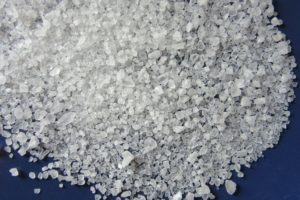Sugar reduction by stealth – part 2
Columns • We have previously written that food producers should reduce sugar by stealth. We are now investigating how this can be done and why it’s time to put the original product at the centre of sugar reduction.
In the article Stop bragging – reduce sugar by stealth! we investigated how sugar reduction can seriously have a breakthrough with the large mass of consumers. Food producers should stop bragging that they are reducing unhealthy ingredients but still reducing. By stealth. In this article, we focus on how it can be done, but we also draw parallels to what we have written in other articles. However, let’s start off with a dilemma.
A dilemma
A dilemma that many food producers face is an aversion to jeopardize the original product. What do we mean by that? Well, a common scenario is that you have an original product that has been around for a long time, maybe several decades, and that sells well. From time to time you try an alternative version, perhaps with other flavours and other ingredients, often some form of ‘light’ version.
And it’s fine to put these alternative products at stake. But you rarely take any risks with the original product. And why would you? The original product often accounts for the majority of sales, it sells well and is in demand by consumers. Why risk it?
Let’s return to the answer to that question shortly. First, we have to repeat the topic of reducing by stealth and take a closer look at why food producers should reduce sugar now.

Sugar reduction by stealth
In the previous article Stop bragging – sugar reduce the sly! we learned that an effective way to reduce unhealthy ingredients is to reduce by stealth. In this way, we can seriously reach out with sugar-reduced products on a broad front.
Three insights
In the article The time for sugar reduction is now we come to three insights that govern why sugar reduction should be prioritized:
- Pressure from legislation and competitors (e.g sugar tax) creates incentives for food producers to put sugar reduction high on the agenda.
- Consumers love sweetness but want to get rid of the negative aspects of sugar. They are also becoming more health-conscious and increasingly interested in ingredients of natural origin.
- The solution for food producers is to invest in the development and innovation of new solutions with natural origins but which also offer sweetness, taste and mouthfeel.
A summary
Let’s stop and ponder what we’ve been through.
The arguments above (the three insights) show why sugar reduction should be a priority. We know that an appropriate strategy to get more people to consume healthier products is to reduce by stealth. But for sugar reduction to have an effect on a broad front and be credible, it should take place in original products and not just in light alternatives. The three insights show that sugar reduction is desirable, but also that there are solutions within reach that enable high-quality sugar-reduced products – as long as you are open to development and innovation.
In the light of these insights, it is perhaps no longer a scary thought to start secretly reducing the original product?
Let’s see how this can be done.
Heinz

In the previous article Stop bragging – reduce sugar by stealth! we cited Heinz as an example. Since the mid-1980s, they have been actively working to reduce sugar and salt in their products; for example, their classic tomato ketchup has undergone a 40 per cent reduction in salt.
But this reduction has been done step by step. The challenge is that consumers must not notice the reduction. If the reduction is too vast and occurs infrequently, there is a risk that consumers’ taste buds will not keep up with the changes. Care and continuity are the watchwords.
But at the same time, you must not reduce too little. Opinion leaders, interest groups, dietitians and others may begin to wonder why you only make changes to the margin. That’s not good either.
Further development
But how much salt can Heinz really reduce without sacrificing taste and mouthfeel?
It can be said that Heinz has come to a crossroad. Ambitious internal requirements and goals have led to a decision to reduce further. But in order to not sacrifice taste and mouthfeel, Heinz needs to find something that can replace the salt.
That is why Heinz works actively with innovation, such as fermentation, to find solutions that offer the same taste and mouthfeel. The goal, according to Heinz, will never be to find a solution that replaces salt one hundred per cent. It’s still about reduction.
You can read more about Heinz in this article in Food Navigator.

A crossroad
When it comes to reducing sugar, there is the same problem – or opportunity if you will.
In the end, food producers will inevitably come to a crossroad. Either they can stop reducing and thus being forced to stay at a certain level, to not jeopardize the taste experience. Or they can continue to reduce by adding something else that can replace the lost sugar, salt or whatever it may be.
The big question is what this ‘something else’ could be?
To replace sugar
Replacing sugar means to replace several things. Sugar not only provides sweetness, but it also gives the right taste and mouthfeel; It has bulking properties and adds volume to food.
Therefore, this ‘something else’ must offer all this; it must give the right taste, flavour, texture and bulk. But at the same time, it must also provide fewer calories and have a lower impact on blood sugar levels than regular sugar.
But even that is not enough.
Consumer preferences
As consumers turn to the natural and free-from, the ingredients in modern sugar reduction must also be flawless. There are many examples of artificial sweeteners that have seen scandals and been met with suspicion from the public. Whether there is truth behind the rumours or not, the damage has already been done; a reputation is easy to get but hard to get rid of.
To reduce and replace sugar, you need something that provides both sweetness and taste, bulk and volume, but which also has a natural origin, has fewer calories and less effect on blood sugar levels as ordinary sugar.
Sweetened fibres
We call our solution sweetened fibres. It is a combination of sugar alcohols, steviol glycosides and dietary fibres. Together, these ingredients can replace sugar 1: 1. Sweetened fibres come in different varieties for different types of foods.
Please, share this article if you liked it.
[et_social_share]







